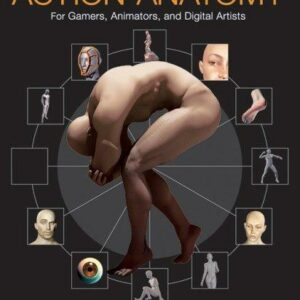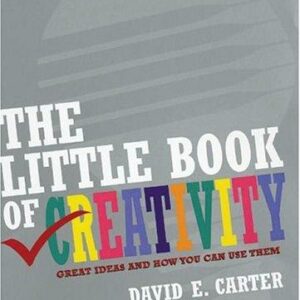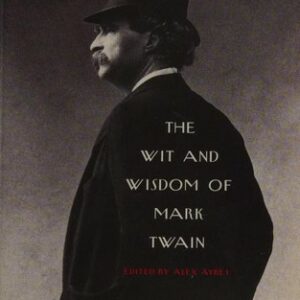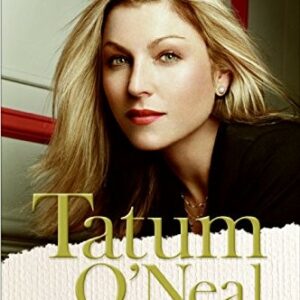Backstory
$15.00
| Title | Range | Discount |
|---|---|---|
| Trade Discount | 5 + | 25% |
- Description
- Additional information
Description
It is said that journalism is a vital public service as well as a business, but more and more it is also said that big media consolidation; noisy, instant opinions on cable and the Internet; and political “bias” are making a mockery of such high-minded ideals. In Backstory, Ken Auletta explores why one of America’s most important industries is also among its most troubled. He travels from the proud New York Times, the last outpost of old-school family ownership, whose own personnel problems make headline news, into the depths of New York City’s brutal tabloid wars and out across the country to journalism’s new wave, chains like the Chicago Tribune’s, where “synergy” is ever more a mantra. He probes the moral ambiguity of “media personalities”—journalists who become celebrities themselves, padding their incomes by schmoozing with Imus and rounding the lucrative corporate lecture circuit. He reckons with the legacy of journalism’s past and the different prospects for its future, from fallen stars of new media such as Inside.com to the rising star of cable news, Roger Ailes’s Fox News. The product of more than ten years covering the news media for The New Yorker, Backstory is Journalism 101 by the course’s master teacher.BackstoryIntroduction
The Howell Doctrine
Demolition Man
Synergy City
New York’s Tabliod Wars
The New York Times’s Outward Bound Adventure
The Reporter Who Disappeared
Fee Speech
The Don
Gotcha: Canidates versus Press
Inside Out
Fox News: We Report. We Decide.
Family Business
Fortress Bush
Acknowledgments
Index
“Ken Auletta is the thinking man’s press critic, press historian, press observer, press guru. He brings his great knowledge, energy and authority to bear in Backstory. He is the best in the business. Period!” —Ben Bradlee
“The basic calling of the journalist is to report today what will be tomorrow’s history. None practices the craft with greater skill than Ken Auletta, and his specialty long has been the news media in all its forms—print, broadcast, cable and the Internet. In his latest book, the prolific Mr. Auletta takes us to the news industry’s back rooms, where we meet some of the noted actors in dramatic confrontation as the business executives and the editorial side try to toe, not always successfully, the thin line between profit and journalistic ethics. Auletta’s book is as up to date as a cable news banner and is an invaluable guide to the most important players in our information age.” —Walter Cronkite“With his latest book, Ken Auletta reaffirms his position as our nation’s leading chronicler and critic of the communications business— the liars and the truth seekers, the media moguls and the spin meisters, the old and the new. Auletta’s work focuses our attention on what’s so extraordinary about the news industry’s transformation in recent times and what’s so troubling.” —Gay Talese
Ken Auletta has written the “Annals of Communications” column and profiles for The New Yorker since 1992. He is the author of eight books, including Three Blind Mice, Greed and Glory on Wall Street, and World War 3.0. In naming him America’s premier media critic, the Columbia Journalism Review said, “No other reporter has covered the new communications revolution as thoroughly as has Auletta.” He lives in Manhattan with his wife and daughter.June 10, 2002—A man who takes the subway wearing the white panama hat of a plantation owner is either blithely arrogant or irrepressibly self-confident, and in the nine months that Howell Raines has been the executive editor of the Times both qualities have been imputed to him. Raines is fifty-nine and has worked for the Times for a quarter of a century; he has been praised and derided for the sometimes coruscating editorial page that he ran from January 1993 until August 2001. But until last year his acquaintance with the newsroom was only passing, and to most of his Times colleagues he was an alien—as the metropolitan editor, Jonathan Landman, characterized him, a “Martian.”
Raines is built close to the ground (he is five feet eight), with short, stocky legs that churn rapidly—like those of a “Tasmanian devil,” one female reporter says. He has neatly brushed-back, wavy black hair flecked with gray, a wardrobe of dapper sports jackets and pastel shirts, a courtly manner, an engaging wit, and he is fond of quoting the former University of Alabama football coach Bear Bryant, or Yeats, or what he learned from his father, growing up in Birmingham, Alabama—sometimes all three and sometimes trying the patience of his listeners.
Raines’s eyes are nearly black; in photographs, even when he’s half smiling, they convey an unsmiling intensity. That intensity has excited and occasionally alarmed the inhabitants of the world’s most powerful newsroom, who often ask if this son of hill-country Alabamans is comfortable leading a newspaper staffed by Ivy Leaguers. They see that he enjoys power and is unafraid to use it, but wonder why he is often hostile to others who hold it. What is clear, a little more than a year since it was announced that he would succeed Joseph Lelyveld in the top job, is that Howell Raines is quickening the pulse of the Times.
Raines has been waiting for this chance for years. His friend R. W. (Johnny) Apple, Jr., the paper’s political sage, recalled a trip they took to South Africa in 1995, when Raines talked about one day becoming executive editor. “‘I’m not at all sure I’ll get it, but I’ll be ready if I get it. I’m going to prepare myself,’” Apple remembers Raines saying. In early 2001, Lelyveld told Arthur O. Sulzberger, Jr., the Times’s chairman and publisher, that he planned to retire as executive editor; and when Sulzberger decided that his choice was between Raines and Bill Keller, the managing editor, Raines had indeed prepared. “I knew that I wanted to raise the competitive metabolism of the paper,” Raines said to me during a series of interviews this winter and spring. When Sulzberger asked him what he might do as executive editor, he told the publisher that he “wanted to enliven the front page with more exclusive breaking news—original stories.” He knew that, unlike almost every other newspaper in America, the Times’s daily circulation was growing—by April of 2001 it had reached 1.15 million—but that this growth came from the national edition, introduced in 1980, which now accounted for nearly half of the paper’s readers.
To continue its expansion, Raines argued, the Times had to become “a must read” for new customers, and he described the paper in somewhat military terms: just as the “Powell doctrine,” promulgated by General Colin Powell, declared that American troops should be sent into battle only if they had enough force to overpower the enemy, so Raines proposed covering big stories with the overwhelming force of the newspaper—some twelve hundred editorial employees who work in newsrooms on the third and fourth floors of the Times Building, on West Forty-third Street, and in offices scattered throughout the building as well as in twenty-eight foreign and ten domestic bureaus. He believed the Times was competing for eyeballs with every newspaper and magazine. In particular, he saw the Journal taking aim at the Times, and he rejected the “dangerous mind-set at the Times that we can’t compete with the Wall Street Journal on business news. My view is that I want to be General Giap to their Westmoreland.” He would move faster, work harder, catch rivals by surprise.
All of their staff’s nervousness about their ambitious new executive editor took a vacation on the afternoon the paper was awarded an unprecedented seven Pulitzer prizes. “What a day. I’m so proud of you all. I’m so proud of us,” Raines told the newsroom.
Morale soared, but he knew that it might plunge again—as it did a few weeks later when the newsroom learned that the investigative editor Stephen Engelberg, who had just won his third Pulitzer, was leaving for the Portland Oregonian. The newsroom blamed Raines for losing Engelberg, though he told those he trusted that his move was a “life-style decision.”
In an odd way, the seven Pulitzers also worried newsroom veterans. Would Raines become more cocksure?
Raines wasn’t happy about these doubts, but he insisted that his focus was on improving his newspaper. He felt free enough to pour himself a glass of bourbon and water in his small back room. “Change always takes people out of their comfort zone,” Raines said one evening. “I’m not rattled by the friction of the moment. You have to set your sights on a beacon that that is a journalistic ideal, and it’s important not to get knocked off course by those winds of criticism. The caricature of me that I see in some of these accounts is completely unrecognizable to me. And therefore not particularly disturbing. I know who I am and I know where I will come out.” US
Additional information
| Weight | 11.6 oz |
|---|---|
| Dimensions | 1.0000 × 5.5000 × 8.4000 in |
| Imprint | |
| ISBN-13 | |
| Author | |
| Audience | |
| BISAC | |
| Subjects | POL065000, history books, news, reference, government, content, pop culture, biographies, geopolitics, strategy, money, essays, economy, social science, economics books, SOC052000, political books, political science books, international politics, business books, sociology books, political philosophy, world politics, arts, politics, marketing, management, advertising, culture, business, american history, work, writing, biography, Film, history, communication, leadership, creativity, media, Sociology, journalism, economics, political science, art, how to |
| Format |











